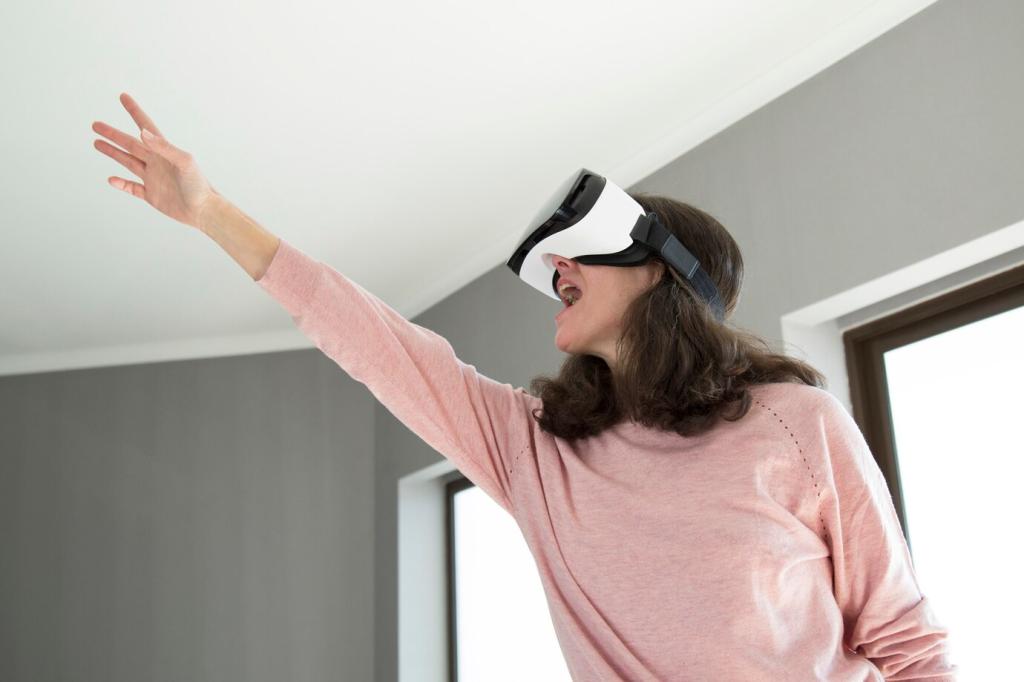Breathe Better: Advanced Air Purifiers for Homes
Chosen theme: Advanced Air Purifiers for Homes. Explore how cutting-edge filtration, smart sensors, and thoughtful design transform indoor air into a calm, healthy sanctuary. Subscribe for weekly tips, ask questions in the comments, and tell us what clean air means to your home.
HEPA H13 and H14: What Those Letters Actually Promise
True HEPA H13 captures at least 99.95% of 0.1–0.3 micron particles, while H14 reaches 99.995%, tackling smoke, pollen, and fine dust. If you have allergies or live with wildfire seasons, this difference matters daily. Share your experiences with HEPA upgrades below.
CADR and Room Size: Matching Machine to Space
Clean Air Delivery Rate translates to how quickly a purifier reduces particulates in a defined space. Pair CADR to room volume for 4–5 air changes per hour in typical use, and 8–12 during smoke events. Comment with your room dimensions for tailored airflow suggestions.
Sensors, Algorithms, and Auto Modes
Modern units read PM2.5, PM1.0, and VOC levels, adjusting fan speed with algorithmic control. Some refine response with particle counters and laser sensors, avoiding overreaction to harmless spikes. Do you trust auto mode, or prefer manual control? Tell us which setting you rely on.
Real-Time Air Quality Dashboards
Apps visualize trends, highlighting spikes during cooking, cleaning, or morning traffic. Seeing the curve change after opening a window is both sobering and empowering. If graphs motivate you to act, set alerts and share your favorite insights that changed your habits.
Voice, Routines, and Scenes
Integrations with Alexa, Google, and HomeKit let you automate fresh air. Trigger high speed when the front door opens or when the stove starts. Night scenes keep things whisper-quiet. What routine would make cleaner air effortless for your family?
Child Locks, Light Dimming, and Sleep Sanctuaries
Advanced models dim displays, silence beeps, and lock buttons to keep little hands safe. Sleep mode balances low noise with steady airflow. If glowing LEDs keep you awake, consider models with full blackout. Tell us how you make bedroom air calming yet effective.

Placement, Airflow, and the Reality of Your Floor Plan
Give intakes and outlets at least two meters of breathing room, avoiding curtains, sofas, and shelves that trap flow. Corners seem tidy, but they starve a purifier’s circulation. Post a photo of your setup, and we’ll suggest small tweaks for bigger impact.
Filters Explained: Beyond the Buzzwords
Activated Carbon and VOCs
Carbon excels at adsorbing volatile organic compounds from paint, cleaners, and cooking. Thickness and dwell time matter more than marketing. If you recently renovated, a generous carbon bed can tame odors and headaches. Ask for our checklist to size carbon to your space.
UV-C, Plasma, and Ionizers: Proceed with Clarity
UV-C can neutralize microbes, but only with proper dose and shielding. Ionizers help clump particles, yet some generate ozone. Advanced models certify low ozone and enclose UV safely. What’s your comfort level with these extras? Let’s discuss trade-offs respectfully in the comments.
Pre-Filters and the Hidden Money Saver
Washable mesh pre-filters catch hair and dust before they clog HEPA. Cleaning them monthly can extend replacement intervals significantly. If you have pets, this one habit changes everything. Share your maintenance routine; we’ll compile community-tested tips in our newsletter.
Noise, Energy, and Everyday Comfort
Decibels, Tones, and Sleep
Low settings hover near 20–25 dB, while maximum power can reach 50–60 dB. But tone matters: a smooth, lower frequency whoosh is easier to ignore. Do you sleep with yours on? Tell us your perfect balance between silence and certainty.
Energy Use That Doesn’t Sting
High-efficiency motors and sealed housings move more air per watt. Scheduling high bursts during busy hours and quieter airflow overnight keeps bills reasonable. Share your kWh readings or smart plug data; we love real-world numbers from real homes.
Allergies, Pets, and Comfort Wins
Advanced purifiers reduce dander, pollen, and fine dust, which often means fewer sneezes and less morning congestion. The comfort boost is subtle but steady. If a cleaner pillowcase surprised you, you are not alone. Subscribe for seasonal adjustment guides tailored to allergies.
Filter Lifespan Is About Load, Not Months
Manufacturers estimate 6–12 months, but wildfire smoke, pets, and city dust can shorten that dramatically. Let sensors and visual checks guide you. When in doubt, replace HEPA and carbon together. Comment with your environment and we’ll estimate realistic intervals.
Seals, Gaskets, and the Sneaky Leak
A pristine HEPA is useless if air bypasses the frame. Inspect gaskets when replacing filters, and ensure panels click firmly. A quick incense test near seams reveals leaks. Want our maintenance checklist? Drop a note, and we’ll send the printable version.
Total Cost of Clean Air
Consider electricity, filter sets, and occasional sensor cleaning. Buying reputable third-party filters can help, but only if they meet specs and seal properly. Track costs in a simple spreadsheet. Share your annual totals, and we’ll crowdsource a realistic budget guide.

Home Stories: Moments When Clean Air Mattered
A reader with spring allergies ran her bedroom unit on medium an hour before bedtime, then low all night. Her morning sneezes almost vanished. Small adjustments, big relief. What pre-sleep routine works for you? Share and inspire someone’s better night.
Home Stories: Moments When Clean Air Mattered
After a weekend repaint, a thick-carbon purifier tamed the lingering chemical smell by Monday. Ventilation helped, but the VOC drop on the app graph was eye-opening. Planning a project? Ask us for a staged approach combining carbon and fresh air.


